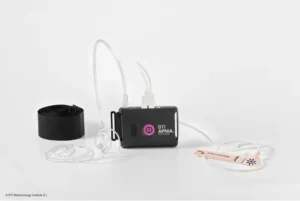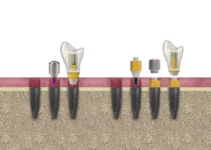Understanding the sounds associated with sleep apnea is crucial for recognizing this sleep disorder early on. Typically, sleep apnea sounds like loud snoring interspersed with choking or gasping sounds as the person briefly stops breathing and then starts again. These apnea episodes can be frightening not only for the person experiencing them but also for loved ones observing these symptoms. By knowing what to listen for, individuals can seek timely medical advice and treatment options to manage this condition effectively.
Understanding Sleep Apnea
Sleep apnea is a common yet often undiagnosed sleep disorder that affects millions of people worldwide. It is characterized by interruptions in breathing during sleep, which can lead to serious health complications if left untreated. Understanding sleep apnea, its types, and its implications is crucial for ensuring proper diagnosis and management.
When breathing is repeatedly interrupted during sleep, the body experiences a brief period of arousal that can disrupt the overall quality of rest. These episodes can happen dozens or even hundreds of times per night, significantly impacting health and wellbeing. The consequences of untreated sleep apnea range from daytime fatigue to an increased risk of cardiovascular disease, stroke, and other serious conditions.
Overview of Sleep Apnea
Sleep apnea is primarily characterized by repeated episodes of partial or complete obstruction of the airway during sleep. These interruptions or pauses in breathing can last from a few seconds to a minute and can occur multiple times throughout the night. The most common indicator of sleep apnea is loud snoring, although not everyone who snores has the disorder.
Other symptoms of sleep apnea include gasping for air during sleep, waking up with a dry mouth, headache in the morning, and excessive daytime sleepiness. In many cases, individuals with sleep apnea are unaware of their condition, as the interruptions in breathing often do not wake them fully. Family members or partners are frequently the first to notice the signs of sleep apnea.
The severity of sleep apnea can range from mild to severe, depending on the number of apnea episodes per hour of sleep. Diagnosis typically involves a sleep study or polysomnogram, which measures various physiological parameters during sleep, including brain activity, eye movements, heart rate, and respiratory effort.
Types of Sleep Apnea
There are three main types of sleep apnea: obstructive sleep apnea (OSA), central sleep apnea (CSA), and complex sleep apnea syndrome (CompSAS), also known as treatment-emergent central sleep apnea.
- Obstructive Sleep Apnea (OSA): This is the most common form of sleep apnea, caused by the physical blockage of the airway. The obstruction is often due to the collapse of the soft tissues at the back of the throat during sleep. Risk factors for OSA include obesity, large neck circumference, and certain anatomical features like a deviated septum or enlarged tonsils.
- Central Sleep Apnea (CSA): This type is less common and involves the central nervous system. In CSA, the brain fails to send appropriate signals to the muscles that control breathing. CSA is often associated with underlying medical conditions such as heart failure or stroke.
- Complex Sleep Apnea Syndrome (CompSAS): This condition is diagnosed when an individual has both OSA and CSA. It is often identified in patients who continue to experience central sleep apnea events even after their obstructive sleep apnea has been treated effectively with Continuous Positive Airway Pressure (CPAP) therapy.
Understanding the type of sleep apnea an individual has is crucial for developing an effective treatment plan. Treatment options vary based on the type and severity of sleep apnea and may include lifestyle changes, the use of CPAP or other airway pressure devices, dental appliances, or surgical interventions. For more in-depth information on sleep disorders and their management, feel free to explore our other articles and expand your knowledge on this critical aspect of health and wellbeing.
Common Symptoms of Sleep Apnea
Sleep apnea is a serious sleep disorder that occurs when a person’s breathing is interrupted during sleep. Individuals with untreated sleep apnea stop breathing repeatedly during their sleep, sometimes hundreds of times. Understanding the common symptoms of sleep apnea can help in identifying and seeking appropriate treatment at the earliest possible stage.
Recognizing the symptoms early can greatly improve quality of life and prevent more severe health complications. Here, we will delve into two of the most common symptoms of sleep apnea: loud snoring and choking or gasping during sleep.
Loud Snoring
Loud and chronic snoring is one of the most prevalent symptoms of sleep apnea. While not everyone who snores has sleep apnea, loud snoring can be a significant indicator. The snoring associated with sleep apnea is often characterized by pauses in breathing and is usually most pronounced when a person sleeps on their back.
Research indicates that snoring, especially accompanied by daytime fatigue, should be taken seriously as a potential sign of sleep apnea. Studies have shown that individuals with sleep apnea often snore so loudly that it can disturb both their sleep and the sleep of their partners.
In many cases, snoring caused by sleep apnea may be followed by moments of silence when breathing stops or nearly stops. This is then followed by a loud snort or choking sound as breathing resumes. Identifying this pattern can be crucial for diagnosis and subsequent treatment.
Choking or Gasping During Sleep
Another alarming symptom of sleep apnea is waking up choking or gasping for air. This occurs when the brain senses the lack of oxygen and briefly rouses the person from sleep to reopen their airway. This pattern can happen multiple times throughout the night, severely disrupting sleep. This choking or gasping sensation is often described as a feeling of being suffocated or having difficulty catching one’s breath. It’s important to note that those experiencing this symptom might not always fully awaken or remember these episodes in the morning, but the interrupted sleep can lead to significant daytime sleepiness and fatigue.
Such episodes can be dangerous, as the frequent awakening puts a strain on the cardiovascular system. Consistent interruption of deep sleep is linked to a range of health issues, including high blood pressure, heart disease, and stroke.
If you or someone you know exhibits these symptoms, it is crucial to seek medical attention for a proper diagnosis. Proper treatment can greatly improve sleep quality and overall health.
These are just a few common symptoms of sleep apnea. Understanding and recognizing these signs can lead to early intervention and effective treatment. For more detailed information, be sure to read our other articles focusing on different aspects of sleep apnea and its management.
How to Diagnose Sleep Apnea
Detecting and diagnosing sleep apnea is crucial for managing the condition effectively. Sleep apnea, which affects millions worldwide, can significantly impact your quality of life and health. Recognizing the symptoms and understanding the diagnostic procedures are essential steps towards getting the right treatment. In this section, we will explore various methods used to diagnose sleep apnea, including home sleep tests, polysomnography, and the importance of consulting a doctor.
The process of diagnosing sleep apnea usually begins with a comprehensive evaluation of your medical history and a physical examination. Healthcare professionals look for certain risk factors such as obesity, high blood pressure, and a family history of sleep disorders. The key diagnostic tools and methods used to confirm sleep apnea are outlined below.
Home Sleep Tests
Home sleep tests are an increasingly popular diagnostic tool for detecting sleep apnea. They offer the convenience of monitoring your sleep patterns in the comfort of your own home. These tests typically involve wearing a simplified monitoring device that tracks breathing patterns, oxygen levels, and heart rate throughout the night.
The primary advantage of home sleep tests is convenience. Patients can perform the test in a familiar environment, which can lead to more accurate results. However, it is essential to note that home sleep tests may not be suitable for everyone, especially those with comorbid conditions or complex sleep disorders.
Despite their limitations, home sleep tests provide a reliable and efficient method for screening sleep apnea. If the results indicate the presence of the disorder, your healthcare provider may recommend further testing or treatment options.
Polysomnography
Polysomnography is considered the gold standard for diagnosing sleep apnea. This comprehensive overnight sleep study is conducted in a sleep lab or a specialized clinic. During polysomnography, a range of physiological parameters are monitored, including brain activity, eye movement, muscle activity, heart rate, and breathing patterns.
The comprehensive data collected during polysomnography allows for a detailed analysis of sleep stages and any disruptions caused by apnea events. This test can also help diagnose other sleep disorders, providing a broader understanding of the patient’s sleep health.
Polysomnography is particularly recommended for individuals with severe symptoms or when the results of a home sleep test are inconclusive. While it may be more time-consuming and require an overnight stay, the detailed information it provides is invaluable for a precise diagnosis.
Consulting a Doctor
If you suspect you have sleep apnea, it is crucial to consult a healthcare professional. Doctors specializing in sleep medicine can guide you through the diagnostic process, interpret test results, and recommend the most appropriate treatment options.
During your consultation, your doctor will review your medical history, discuss your symptoms, and perform a physical examination. They may inquire about your sleep habits, daytime sleepiness, and any other relevant factors that might contribute to sleep apnea.
Based on the initial assessment, your doctor may recommend a home sleep test or polysomnography. They will also explain the benefits and limitations of each diagnostic method to help you make an informed decision.
Consulting a doctor ensures you receive a comprehensive evaluation and personalized care. Proper diagnosis is the first step towards effective treatment, which can significantly improve your overall health and well-being.
For more information on managing sleep apnea and other related topics, be sure to explore our other articles. Finding the right information is key to enhancing your health and quality of life.
Understanding the Sounds of Sleep Apnea
Recognizing what sleep apnea sounds like can be crucial for identifying this serious sleep disorder. Here are common questions about the auditory symptoms of sleep apnea.
What are the typical sounds associated with sleep apnea?
Sleep apnea is often marked by loud snoring interrupted by pauses and gasping or choking sounds. These interruptions, called apneas, occur when the person stops breathing for a brief period and then suddenly resumes breathing, often with a loud snort or choking sound.
How do these sounds differentiate from regular snoring?
Unlike regular snoring, sleep apnea sounds include noticeable pauses in breathing, followed by choking or gasping noises. Regular snoring tends to be more continuous and steady, while sleep apnea involves abrupt disruptions, which are the silent intervals followed by sudden gasps that indicate breathing resumption.

My name is Salman Kapa, a 73-year-old expert in bone regeneration and dental implantology. With decades of experience in the field, I am dedicated to advancing our understanding of oral health and hygiene. Through my research and writing, I aim to contribute to the development of innovative solutions in dental care.




